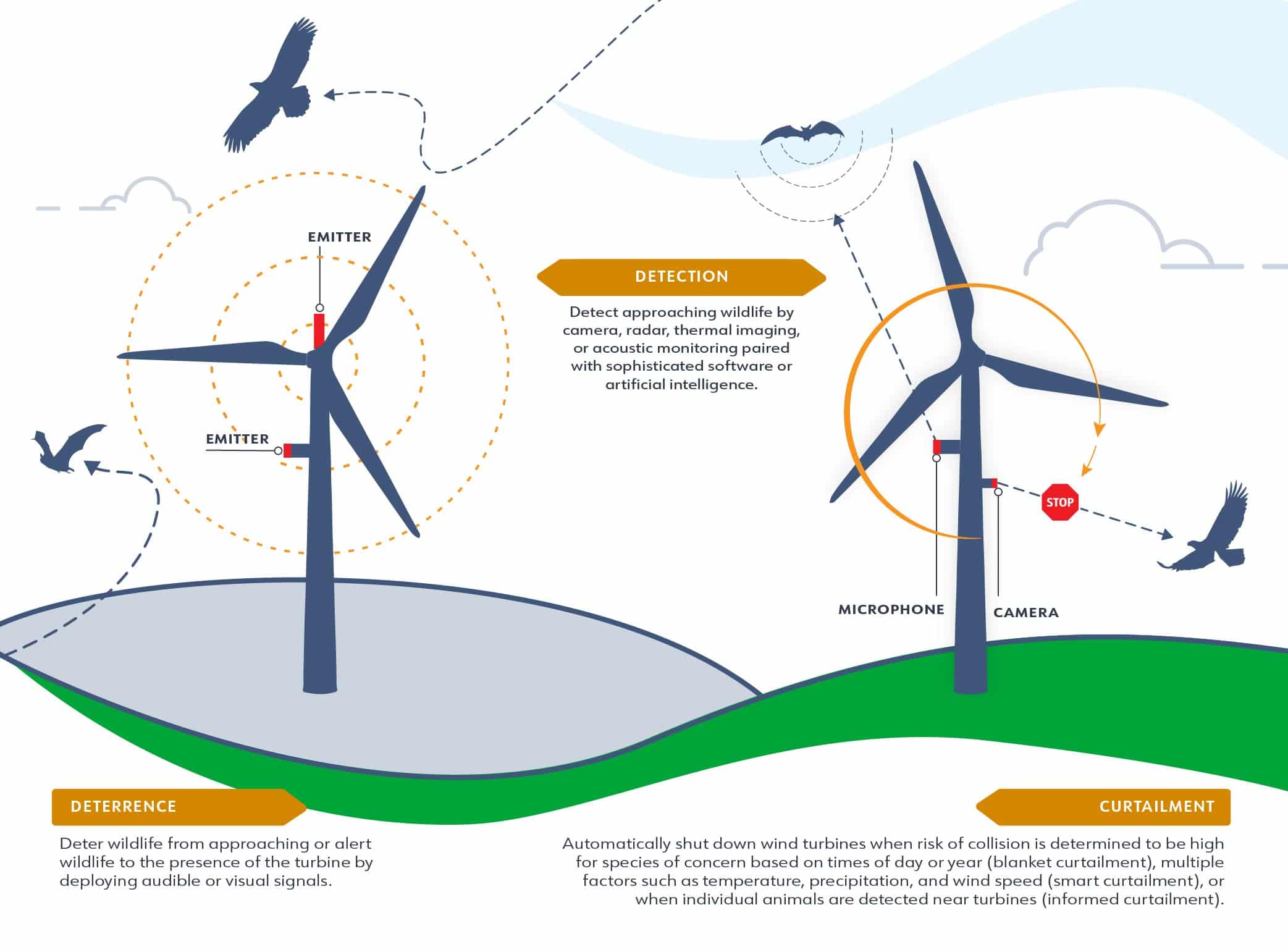04
Minimizing Collision Risk to Wildlife During Operations
Because there is no way to avoid all wind-wildlife interactions, stakeholders have developed an array of strategies and technologies to minimize collision impacts, and researchers are evaluating the effectiveness of different minimization approaches. There are two main strategies to minimizing collision risk during wind energy project operation: deterring birds and bats from getting too close to a turbine, using audible or visual signals, or curtailing (shutting down or slowing) turbines during times of higher collision risk. Detection of animals approaching the risk zone can be used to inform deterrence or curtailment strategies. Our emerging understanding of variables associated with collision risk for particular species is helping to refine curtailment strategies that minimize loss of energy production while better targeting species of concern. Any strategy that involves modifying turbine equipment or adapting facility operations has to be carefully considered from an engineering and systems perspective.
Minimization: Deterrence
Technologies and strategies are being tested which reduce fatalities by deterring target species of birds and bats from getting too close to operating wind turbines while allowing turbines to operate normally. Current approaches being tested include using either audible or visual cues to deter birds or bats. Technologies designed to detect birds or bats of concern approaching the “risk zone” can be used to trigger deterrent signals.
Minimization: Curtailment
Shutting down or slowing turbine operations, known as “curtailment,” can help reduce bird and bat collision fatalities at wind turbines during periods of increased risk. Raising the cut-in speed (wind speed at which turbines begin generating electricity) has proved effective in reducing bat fatalities because most collisions involving bats occur when wind speeds are low. Curtailing specific turbines when eagles are present has also proved to be effective in reducing eagle fatalities. A better understanding of which variables are associated with collision risk allows project managers to refine curtailment strategies to both optimize risk reduction for birds and bats and minimize loss of energy production. Some strategies use detection and tracking of certain birds or bats to trigger curtailment.
Operational Constraints and Considerations
Wind turbines and the systems for controlling their operation are highly engineered to perform as efficiently as possible under sometimes challenging environmental conditions. To be implemented effectively, technologies designed to minimize wildlife impacts during wind facility operation need to be able to do so without adversely affecting turbine performance or maintenance requirements.
